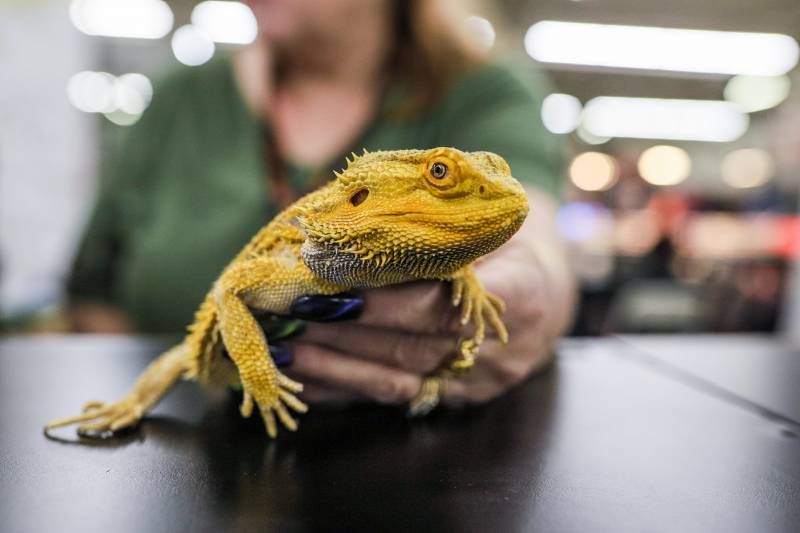Where can you find a poisonous snake, a Madagascar hissing cockroach and a leopard gecko all in one place?
Today, thousands descended on the Cow Palace in Daly City for the 2nd annual Reptilian Naiton Expo. The event drew around 100 reptile sellers and suppliers. The expo began in Fresno in 2015, organizer L.A. native Ryan Minardi said. He’s now expanded to three other California locations, as well as Las Vegas and Denver.
Why reptiles? “I don’t know, man,” Minardi said. “I just like them. They’re beautiful. Some of them have personalities.” Minard keeps over 20 snakes.
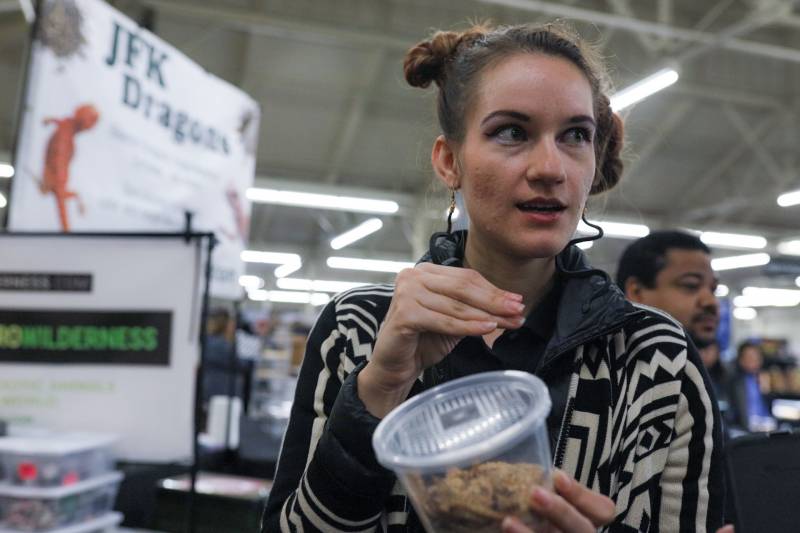
“We are big animal lovers,” Natasha Villareal said, who’s owned Micro Wilderness for two years with her husband.
She showed off her captive-bred leopard gecko, “They’re great,” Villareal said. “Very friendly. When you [they] have babies, you don’t know what kind of color you’ll end up with. It’s kind of a surprise.”
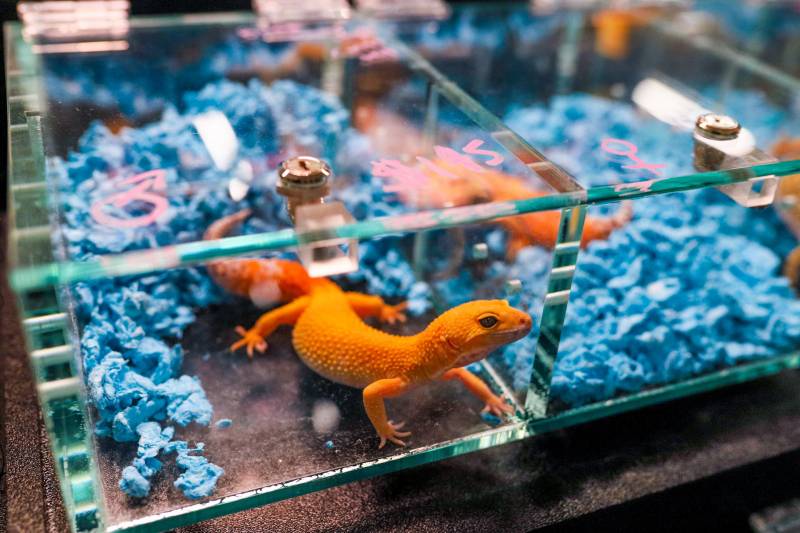
The leopard geckos live between 20 to 30 years, Villareal said. “It really depends on how people take care of them and what environment they are in.” When the geckos are babies, they eat crickets and mealworms. When they get older, they eat superworms.
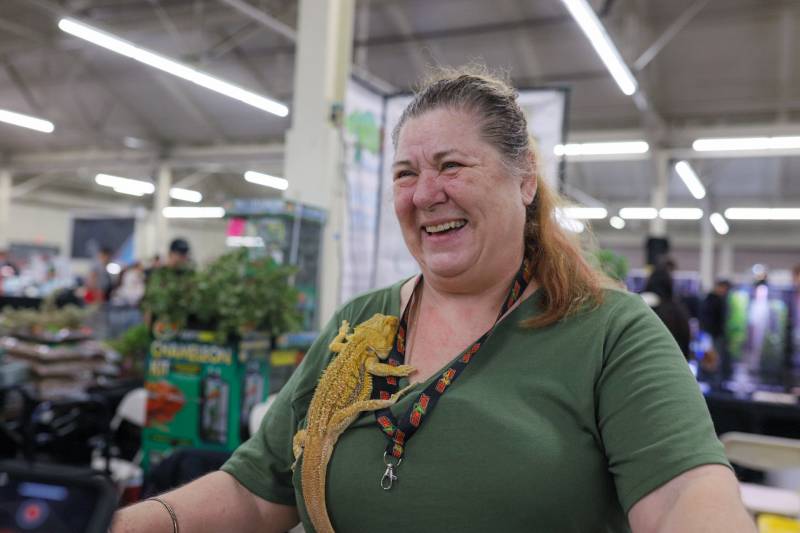
With a central Australian bearded dragon propped up on her chest, San Francisco native Laurie Rajeff says that this particular reptile listens to her conversations. “Mine watches TV,” she said. The bearded dragon eats everything from mealworms to superworms to pinky mice (which are newborns). “[They’ll] chomp them right down,” Rajeff said. She also said they’ll eat Madagascar cockroaches. “Delicious, nutritious. Like fillet mignon.”
Rajeff’s friend Gladys Bancroft-Crampton, who owns a pet store in Pacifica, says she tries to educate buyers on how to properly take care of the reptiles. “Sometimes when you buy a reptile at a show, the person selling it to you hasn’t told you exactly how to take care of it,” Bancroft-Crampton said. “It’s a long time commitment. Many of these reptiles live a long time.”
For those not quite ready for a 30-year-long commitment to a reptile, she suggests adopting an older one.

Carl Person from southern California knows all the ins and outs of poisonous snakes. At the expo, he showed off a variety of deadly snakes including a cottonmouth, a Gaboon viper, black Pakistan cobra, inland taipan and a western diamondback rattlesnake.
Part of Person’s show is about the medicinal application of snake venom. One example he gave was captopril, derived from the venom of the jararaca snake. Person said “millions and millions of people worldwide depend on that drug to stay alive. It’s used for congestive heart failure and kidney failure in diabetics.”
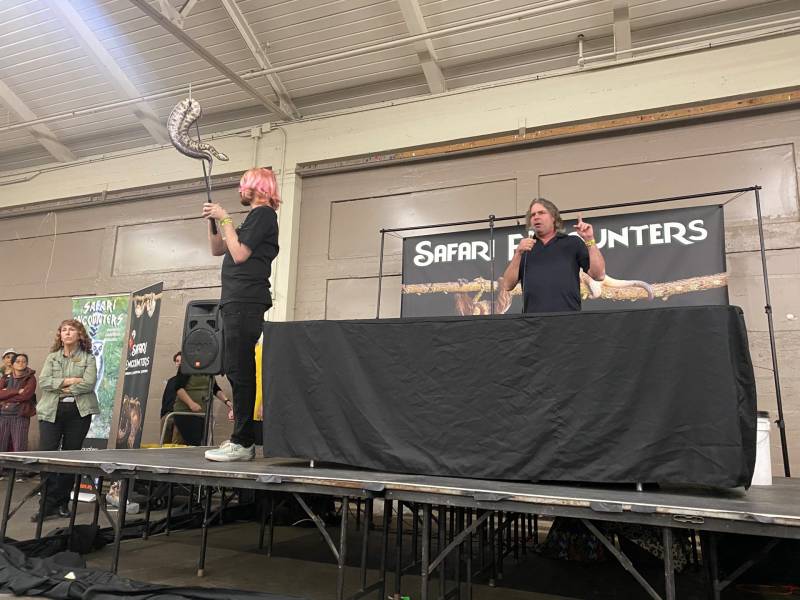
He says that in the 30 years of working with snakes, he’s only been bit once. “After you’ve been doing it for this long, you kinda know what they’re gonna do before they do it. So, not a problem.”
